NAVYPEDIA
 Support the project with paypal
Support the project with paypal
Photo

Ranger 1944
Ships
| No | Name | Yard No | Builder | Laid down | Launched | Comm | Fate |
|---|---|---|---|---|---|---|---|
| CV4 | Ranger | 353 | Newport News | 26.9.1931 | 25.2.1933 | 4.7.1934 | stricken 10.1946 |
Technical data
| Displacement standard, t | 14575 |
|---|---|
| Displacement full, t | 17577 |
| Length, m | 222.5 wl 234.4 oa |
| Breadth, m | 24.4 wl 33.4 oa |
| Draught, m | 6.83 full load |
| No of shafts | 2 |
| Machinery | 2 sets Curtis (HP) / Parsons (LP) geared steam turbines, 6 Babcock & Wilcox boilers |
| Power, h. p. | 53500 |
| Max speed, kts | 29.2 |
| Fuel, t | oil 1567 - 2350 |
| Endurance, nm(kts) | 7000 (15) |
| Armour, mm | belt: 51 (aircraft ammunition holds only), bulkheads: 51, deck: 25 |
| Armament | 8 x 1 - 127/25 Mk 10.11.13, 40 x 1 - 12.7/90, 76 aircraft (F4B, FF fighters, F8C-4, F11C, BFC, BF2C Goshawk fighters - diving bombers, BM diving / torpedo bombers, T4M, TG torpedo bombers - reconnaissance planes, O2U Corsair, O3U, SU, SF reconnaissance planes) |
| Complement | 1788 |
Air group
| Year | Fighters | dive bombers | torpedo bombers | Seaplanes |
|---|---|---|---|---|
| 6.1936 | 30 F2F | 30 BM and BG, 15 SBU | --- | --- |
| 1941 | 18 F4F-3 Wildcat | 37 SB2U-1/2 | --- | 4 SOC-1, 2 J2F-1 |
| 11.1942 | 54 F4F Wildcat | 18 SBD Dauntless | 1 TBF Avenger | --- |
| 10.1943 | 27 F4F Wildcat | 27 SBD Dauntless | 18 TBF Avenger | --- |
Standard scale images

Ranger 1940
Graphics
Aircraft facilities
(fd - 5,662 m², ha - 3,330 m² / 19,216 m³): Flight deck: 216.1 x 26.2 m. Hangar: 168.2 x 19.8 x 5.77 m. There were 3 elevators (fore and mid: 15.8x12.5m, 6.8t and aft: 12.1x10.6m, 4.1t). Aircraft fuel stowage: 514 400 l.
Project history
First USN ship originally laid down as an aircraft carrier. Design was developed practically without operating experience of carrier aircraft, rather small (in comparison with Lexington class) dimensions were defined by desire to have largest number of aircraft carriers within the limits of total displacement, contemplated by Washington Treaty of 1922. The decision on building of CV4 with 13800t displacement was accepted in 1930. Originally it was supposed, that it will be flush-deck ship without island superstructure, but during a building design was changed. Six folding smoke tubes (three from each side) became prominent feature of ship. Fitting of originally planed turbo-electric machinery have refused in favour of more compact geared turbines.
As a whole Ranger was appeared not successful: small dimensions and an irrational elevators arrangement strongly inhibited air group action. Also she suffered by insufficient seaworthiness, low stability and absence of underwater protection.
Ship protection
Aircraft armament holds had box-shaped vertical protection with 51mm belt and 51mm bulkheads. Flight deck over hangar had 25mm thickness.
Modernizations 9.
1941: - 16 x 1 - 12.7/90; + 6 x 4 - 28/75 Mk 1
8/1942: + 30 x 1 - 20/70 Mk 4
1/1943: flight deck was lengthened to 228.6 m (fd - 5,989 m², ha - 3,330 m² / 19,216 m³); - 6 x 4 - 28/75, 24 x 1 - 12.7/90; + 6 x 4 - 40/56 Mk 1.2, 16 x 1 - 20/70 Mk 4, SC-2, SP, 2x Mk 4 radars
autumn 1943: - 6 x 1 - 20/70
7/1944: - 8 x 1 - 127/25, 2x Mk 4 radars; + 1 catapult H-II-1, SM radar
1/1946, CV4 Ranger: 6 x 4 - 40/60 Mk 2, 40 x 1 - 20/70 Mk 10, 1 catapult, 76 aircraft, SC-2, SM, SP radars
Naval service
Ranger was used as training carrier since 4.1944.
 HOME
HOME FIGHTING SHIPS OF THE WORLD
FIGHTING SHIPS OF THE WORLD UNITED STATES OF AMERICA
UNITED STATES OF AMERICA AIRCRAFT CARRYING SHIPS
AIRCRAFT CARRYING SHIPS RANGER aircraft carrier (1934)
RANGER aircraft carrier (1934)
